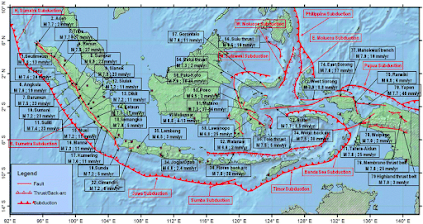Week 5 - Volcanoes
Indonesia has one of the highest numbers of active volcanoes in the world (at least 124) with approximately 13% of the world's active volcanoes. The island country is dominated by volcanoes formed by subduction of nearby plate boundaries. The majority of Indonesia's volcanoes are located along the Sunda Arc, a volcanic arch stretching 3000 km from Sumatra to Flores that rests atop an active plate boundary where the Indo-Australian plate is subducted beneath the Eurasian plate. In 1920 the Volcanological Survey of Indonesia was created to investigate, record, and warn about volcanoes in the region, leading to improved monitoring and reporting. VSI now operates a network of 64 volcano observatories to continuously monitor 59 volcanoes. Fairly recently, the Indonesian Center for Volcanology and Geologic Hazard Mitigation has also received assistance from The Volcano Disaster Assistance Program to improve monitoring capabilities throughout the islan...
